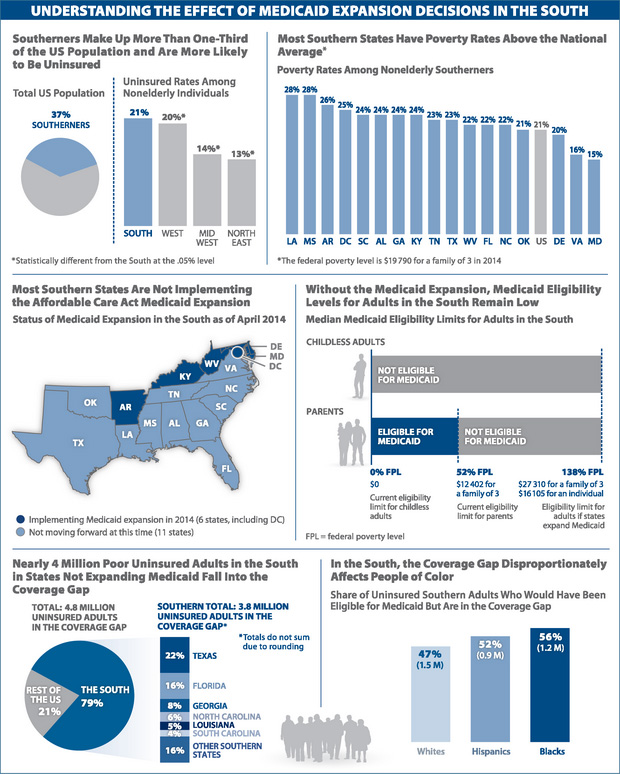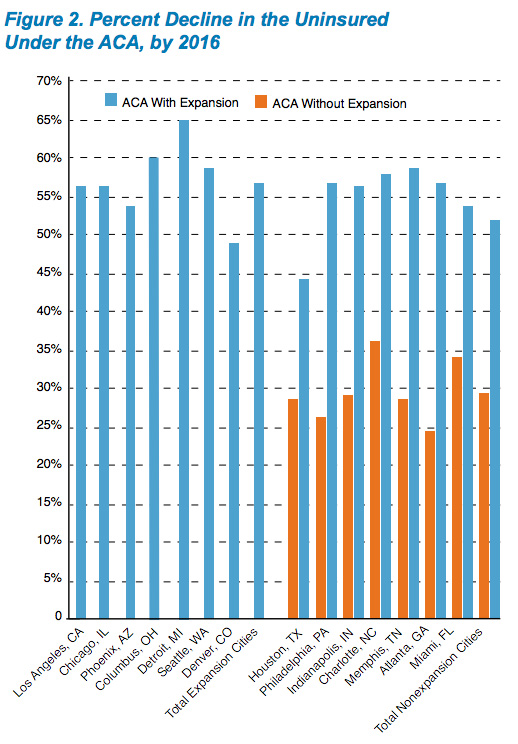Explainer: Medicaid expansion in 8 infographics
When the Supreme Court upheld the constitutionality of the Affordable Care Act (also known as Obamacare) in June 2012, it did not allow the historic health care reform package to pass unscathed.
The court’s landmark 5-4 decision preserved the most controversial aspect of the law — the “individual mandate” requiring Americans to obtain health insurance or pay a tax to the government — upsetting opponents of Obama’s trademark policy.
But, in a surprise move, the court ruled that one of the most wide-reaching aspects of the law — forcing states to expand Medicaid to all non-elderly people with incomes below 138 percent of the poverty line — was a violation of the Constitution. The federal government, the court ruled, had to leave the decision to expand Medicaid up to the individual states and could not penalize states for not participating.
Despite promised federal funding to pay the entire cost of the expansion for the first three years and 90 percent after that, about half of the states — mostly in the rural south, where the expansion would have the largest impact — opted out. As of this writing, 21 states, all with Republican governors or Republican-controlled legislatures, have chosen not to expand Medicaid at this time.
The result of those choices is a gap in coverage affecting poor people in the states that are not expanding. In “The Coverage Gap,” airing Sat., July 12, at 7 pm Eastern time/4 pm Pacific time, Fault Lines examines the reasons behind states’ choices not to expand and meets a few of the people left without health care.
The following infographics explain what the consequences of not expanding Medicaid means for the millions of low-income Americans who will remain without the health care they would have had if their respective states had chosen otherwise.
1) What is the purpose of Medicaid expansion in the context of the Affordable Care Act? Who would be newly covered if a state opts in? (Click image to see a larger version of the infographic.)
2) Low-income, uninsured adults in states that have decided not to expand are already at greater risk of suffering from various health conditions than those who reside in states that have chosen to expand.
3) Simply put, access to health coverage saves lives. Here's a sample of how many lives could be saved by expanding Medicaid in states that, in early 2013, were leaning toward opting out.
4) According to the conservative Heritage Foundation, Medicaid expansion is a bad deal for states. Those opposed to expansion often tout the fiscal burden — and the possibility that the federal government will stop funding the program down the road — as justification for opting out.
5) Health care non-profit The Commonwealth Fund, however, says that states that don’t opt in are leaving billions of federal dollars on the table. And residents in non-expanding states will still pay the federal taxes that support Medicaid expansion across the country.
6) The decision on whether to expand Medicaid will deeply affect people in the South, where the proportion of uninsured and the percentage of people in poverty are higher than the national average. Most southern states have opted out of expansion, despite a recent poll showing a majority of residents of southern states supporting expansion.
7) The decision to not expand Medicaid — made exclusively in states with Republican governors and/or Republican-controlled legislatures — will have an outsized effect on people of color.
8) Low-income Americans tend to be concentrated in cities and urban areas. In states that have expanded Medicaid, urban areas will see almost double the decrease in the number of uninsured residents compared to cities in states that haven’t expanded.









Error
Sorry, your comment was not saved due to a technical problem. Please try again later or using a different browser.